The dream of discovering the last remnant of some long-vanished civilization, preserved by isolation but within surprisingly convenient travel distance1, was once a staple of adventure fiction. Of course, the surface of the Earth has now been thoroughly explored (and exploited), leaving few places for such relics to survive.
Of course, fiction authors do not toil under the burden of reality—consider these five early and mid-20th century examples…
Of One Blood: Or The Hidden Self by Pauline Hopkins (1903)
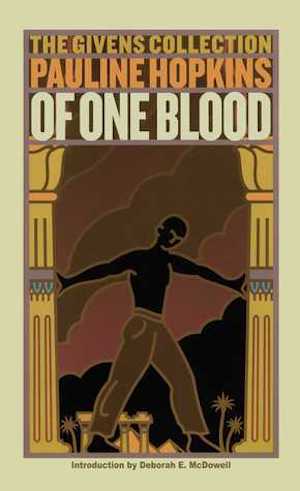
Medical student Reuel Briggs is passionately curious about nearly everything… except about the status of Black Americans in turn-of-the-century America. This because, although his classmates take Reuel for Italian or perhaps Japanese2, Reuel is in fact of both European and African heritage. The former being far more socially acceptable, he ignores the second.
Romantic rival Audrey’s needlessly convoluted plot to rid himself of Reuel while winning the beautiful Dianthe for himself sends Reuel to Africa. There Reuel discovers many wonders, not least the ancient city of Telessar, jewel of Meroe, and a heritage of which he previously knew little. Reuel also learns of his rival’s deplorable scheme… but will he be able to return in time to save Dianthe?
The author took her title from Acts 17:26, “And hath made of one blood all nations of men for to dwell on all the face of the earth.” This ties directly into the themes of the novel, that the barriers imposed between races are only social conventions. In fact, Reuel’s mixed heritage makes that clear, although certain ramifications of this have been concealed from him.
The Citadel of Fear by Francis Stevens (1918)
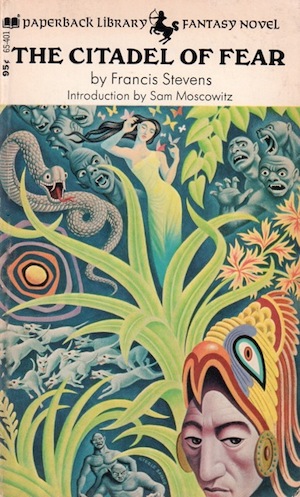
American explorer Archer Kennedy and his Irish companion Colin O’Hara set off across an inhospitable desert to the Collados del Demonio (the Hills of the Fiend). The pair hoped to find wealth. They find Tlapallan, a thriving Mesoamerican city, hidden in the hills, largely unaffected by post-1492 developments. Until now.
Two ancient gods still rule Tlapallan, benevolent Quetzalcoatl and malevolent Nacoc-Yaotl. Boisterous O’Hara almost immediately gets himself exiled from Tlapallan, free to seek his wealth elsewhere. Arrogant Kennedy’s transgressions demand imprisonment. Too bad for the lost city, as Kennedy is an atheistic egotist, the perfect patsy for an angry god.
Many Call of Cthulhu players may have asked, “why do cultists serve omnicidal beings?” In Kennedy’s case, it is because Kennedy believes that all that god stuff is rank superstition and that only he possesses the brilliance to understand and use the undiscovered science behind the supposed miracles. Interestingly, the Nacoc-Yaotl priests do not serve their god. Instead, they were doing their best to contain it.
The Man of Bronze by Lester Dent, writing as Kenneth Robeson (1933)
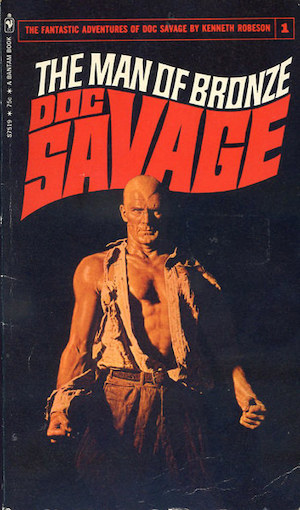
Clark “Doc” Savage, Jr. returns to New York to discover that his father has died of a mysterious illness. Perhaps Doc would have accepted his father’s death as due to natural causes if the schemer who murdered his dad had kept a low profile. But the schemer is worried that Doc will figure things out, so attempts to assassinate him. Doc foils the attempt and starts to unravel the plot.
The trail leads Doc and his friends to an obscure valley in a regrettably depicted fictional Central American nation, Hidalgo. The Valley of the Vanished hosts a thriving Mayan city3. It also contains enough gold to finance a coup… provided the Mayans can be convinced that a certain ambitious outsider is a god. Alas for the blasphemous schemer, Doc and his crew of almost entirely superfluous pals have been alerted to his dastardly scheme.
This is a nearly perfect example of what TV Tropes calls a revealing cover-up. Had the villain left the Savage family alone, there would have been no reason for Doc to take a close interest in Hidalgo until after the coup. In fact, the scheme had dire consequences for several entirely unrelated criminal plots, as the grateful Mayans then funded Doc’s crime-fighting career.
Starship Through Space by G. Harry Stine, writing as Lee Correy (1954)
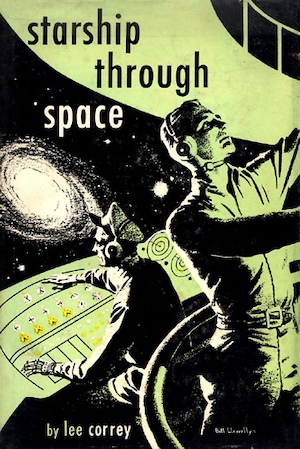
Heretofore, human space exploration has been limited to the solar system. Now, thanks to Project Thunderbird, humanity has its first faster-than-light starship, Vittoria. Crewed by humanity’s best, young Walt Hansman among them, Vittoria sets off to Alpha Centauri. Revelations await!
They reach Alpha Centauri’s Earthlike planet New Terra, which is populated by oddly human-like native Ainsath. It turns out that the Ainsath are human-like because they are human. Vittoria is not the first human starship. There was, it seems, an entire chapter of human history erased from memory… on Earth. Not on New Terra.
Famed critic and noted curmudgeon Damon Knight was not entirely kind to this novel. One can see why certain elements of the novel would have vexed Knight, not least of which was Stine’s decision to make Walt simultaneously a crack space cadet who earns his way on board and also the nepo-baby son of a senior Project Thunderbird researcher.
Star Born by Andre Norton (1957)
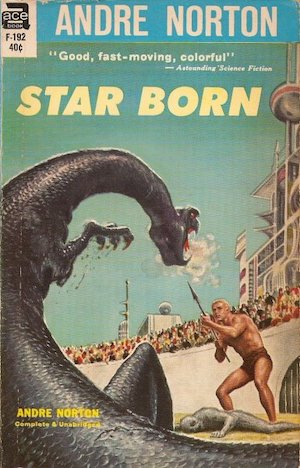
Having thrown off world government Pax’s authoritarian shackles, Earth’s Federation of Free Men has once more embraced FREEDOM! and SCIENCE! The new government sends out ten starships, nine of which vanish without a trace. The tenth recapitulates the voyage depicted in 1954’s The Stars Are Ours! and finds its way to Earthlike Asta.
The first humans on Asta settled in a region populated by kindly mermen. The newcomers injudiciously set down near the last redoubt of the Others, who are neither mermen nor kindly. Once Asta’s rulers, the Others are now a powerless remnant—but the willfully naïve Terrans may be just the tool the Others need to reconquer Asta.
The poor Terrans are handicapped by their otherwise laudable efforts to put ancient prejudice behind them. Aware that tyrannical Pax used bigotry to divide Earth, Terrans do their very best to avoid even the appearance of prejudice or bias… which means ignoring all the evidence the Others are pure evil while being dazzled by their advanced technology. Eventually, they figure it out, while there’s still time to fight back.
These are, of course, only a few examples of a vast, thriving subgenre. There have been thousands of thrilling tales about cultural refugia hidden away in jungles, deserts, and alien worlds, perhaps even burrows. Have I missed your favourites? Mention them in comments below.
- Of course, there are examples of ancient civilizations surviving into modern times, but because they are places to which one can book a plane flight, people may not think of them as they might Opar. On a less pleasant note, there is a tendency in some circles to dismiss as long-vanished ethnolinguistic groups that are still with us. The Maya would be a prime example. ↩︎
- You may think this odd. But it’s in the book: “None of the students associated together in the hive of men under the fostering care of the “benign mother” knew aught of Reuel Briggs’s origin. It was rumored at first that he was of Italian birth, then they “guessed” he was a Japanese (…)” Italians weren’t exactly considered white in 1903; Japanese would have been even less “white.” But if Reuel’s fellow students had realized that Reuel had African heritage, they would have been far more hostile than they were. ↩︎
- Related to footnote one: Doc and his pals think very highly of the ancient Maya civilization and very poorly of its modern descendants (one very special hidden valley aside). Essentially, the more likely they think they are to encounter a living example, the less enthusiastic Doc and company are. The process by which they reconcile their admiration of the ancients with their distaste for moderns involves mental gymnastics I will not reproduce here. If you want non-white characters depicted sympathetically and with a modicum of dignity in pulp-era adventure, you want the “Justice Inc,” series, written by the other Kenneth Robeson, Paul Ernst. ↩︎










